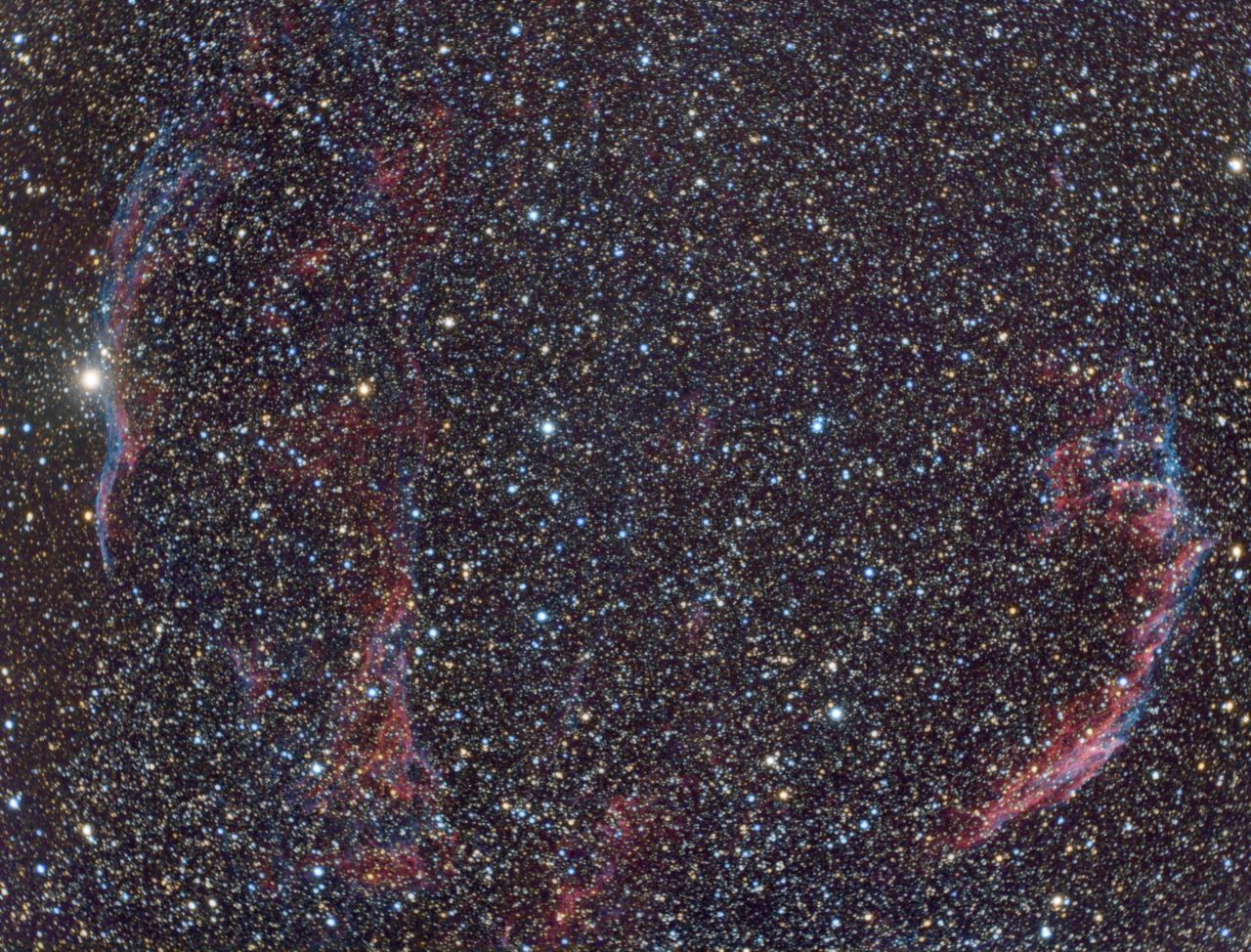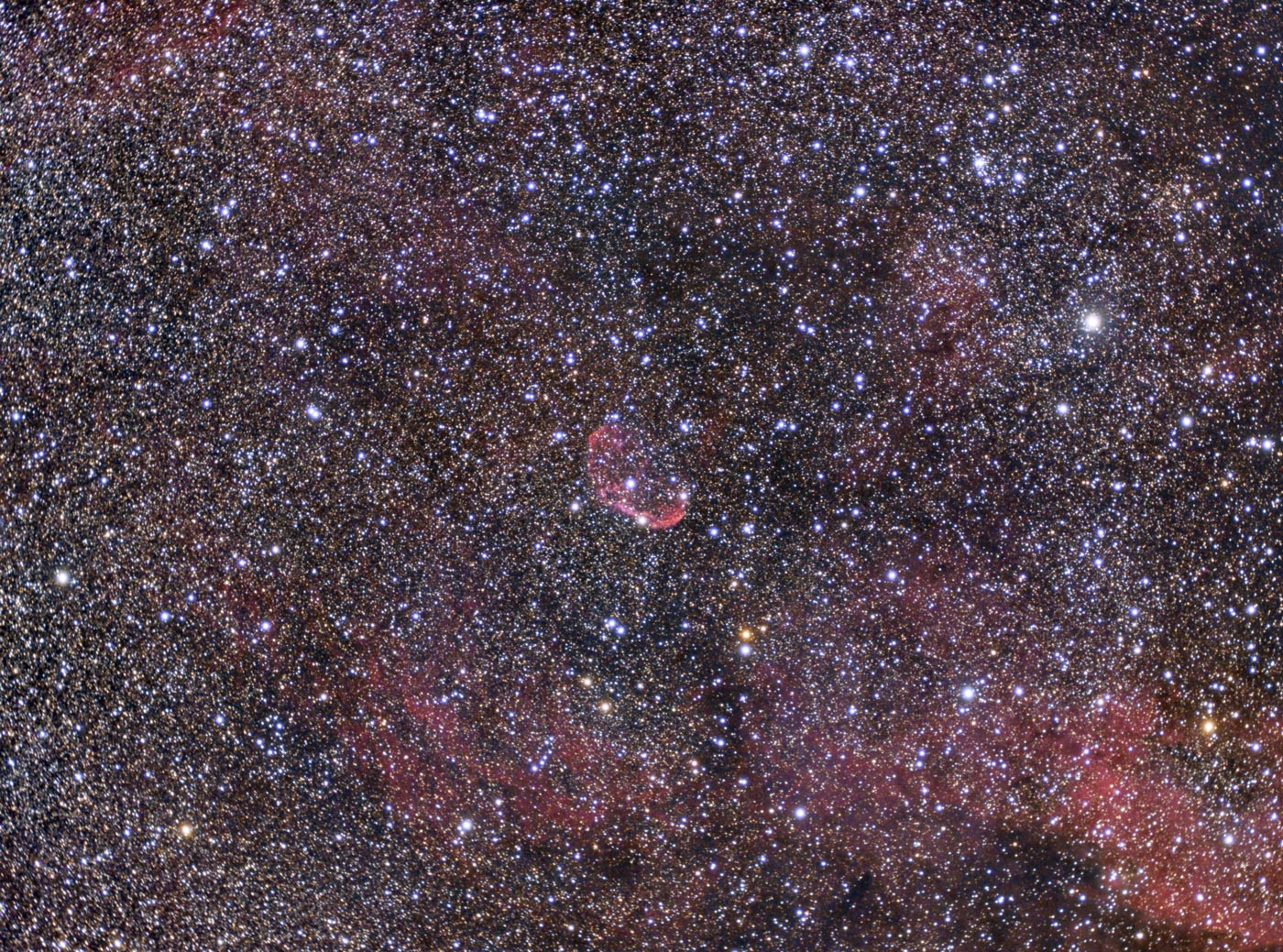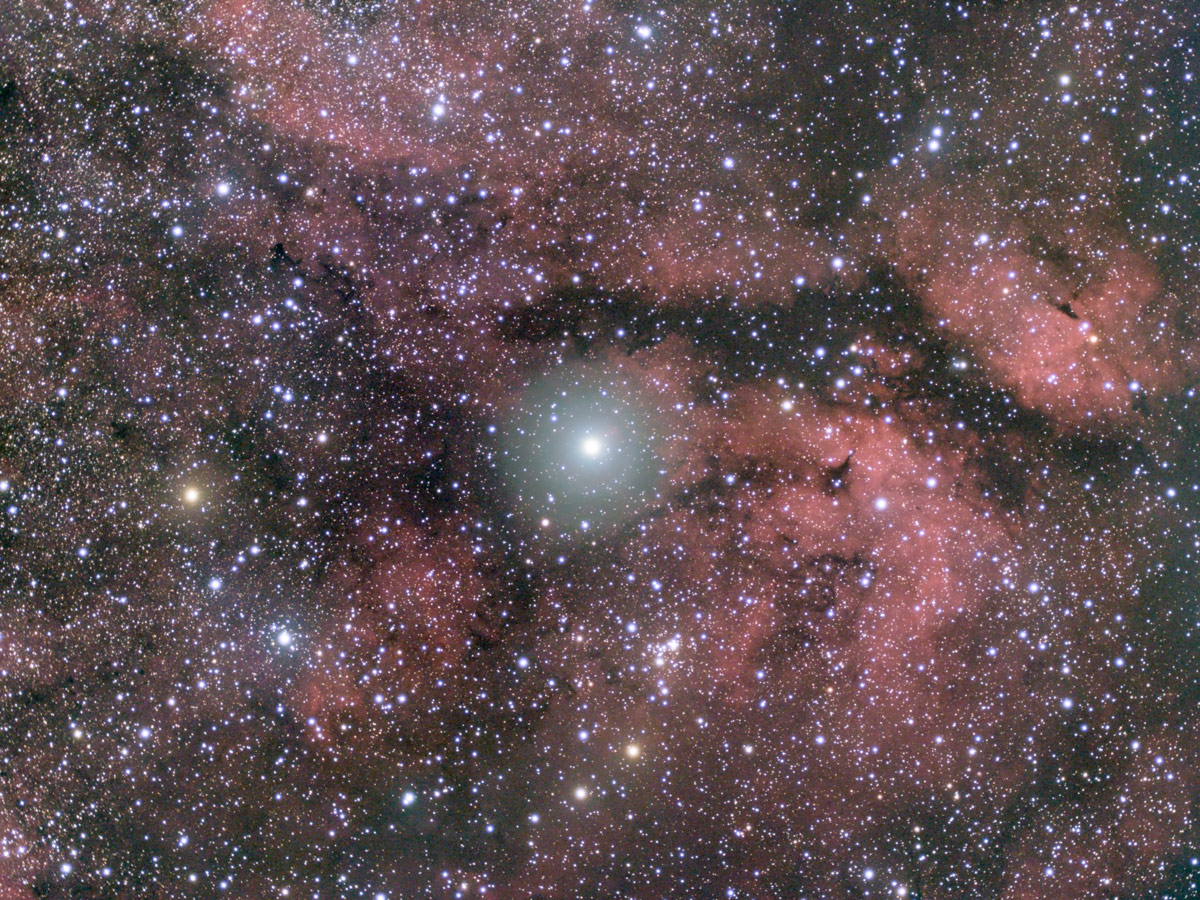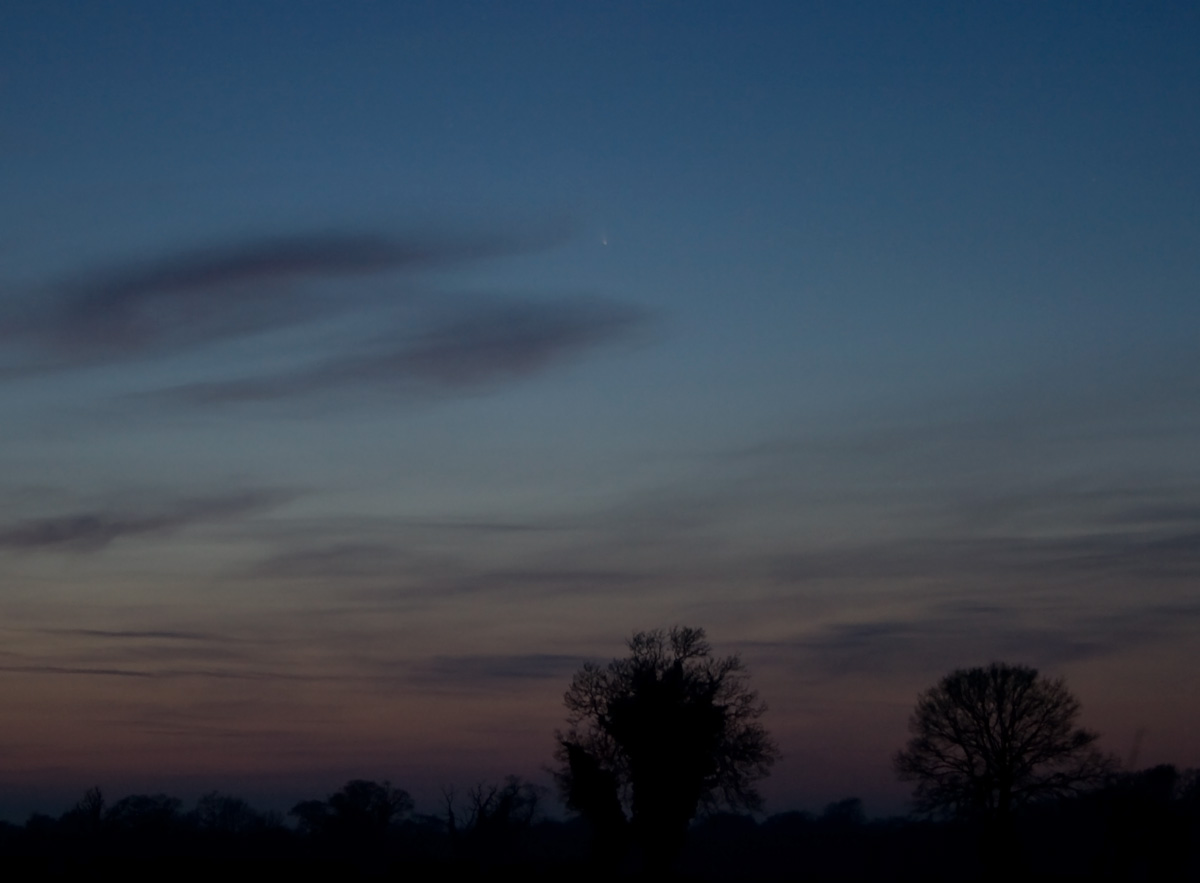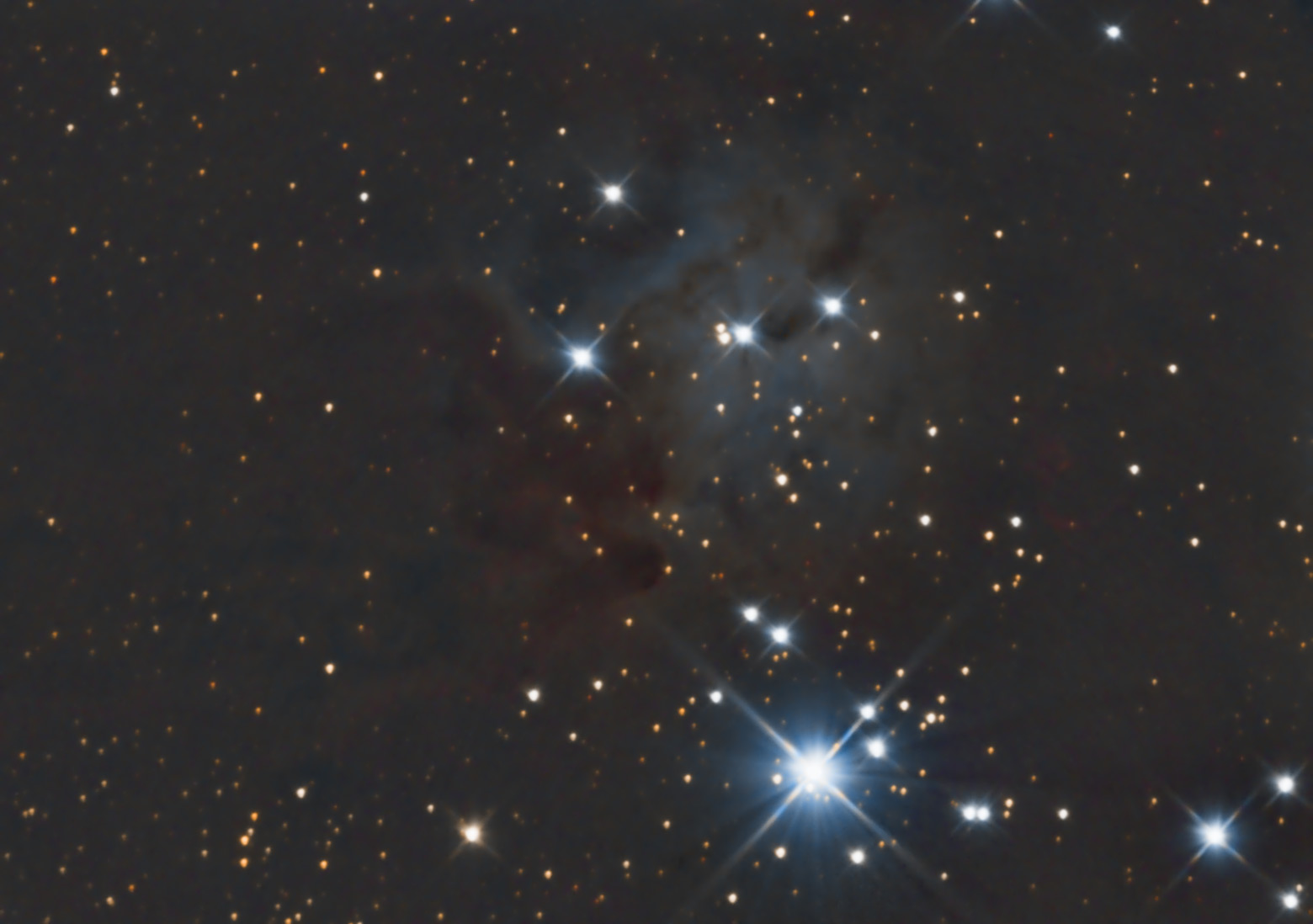Breckland’s Haw Wood Farm star party has been and gone but what a weekend is was with very good conditions all week. I attended on the Friday and Saturday nights. Friday was clear until about 3:30am, Saturday, 2am.
On Friday evening I finished the evening at about 1am by setting up a sequence in CCD Commander (which I’m trialling at the moment) of 3 minute images of M45 and went to bed. Waking at 3am, I packed up the gear as it had clouded over and rain was forecast.
In all, I collected 45 exposures. Trailing continued to be a problem throughout the weekend but I have a theory that it’s due to some slight vibration from the camera fan. My thanks to John Hipperson for putting the idea in my head.

